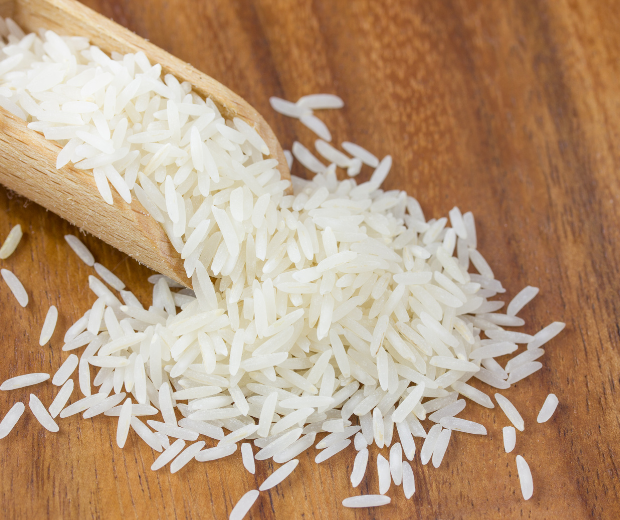Basmati rice, renowned for its enticing aroma and long, slender grains, is a beloved staple in many households worldwide. However, the journey from rice paddies to dinner plates has its challenges. In this article, we will explore the multifaceted challenges that Basmati rice exporters encounter as they strive to meet global demand.
Basmati rice is celebrated for its exceptional aroma and long, slender grains, but behind the scenes, basmati rice exporters face a myriad of challenges in the global marketplace.
The Global Demand for Basmati Rice
Before delving into the challenges, it’s crucial to understand why Basmati rice enjoys such high demand worldwide.
In recent years, the global demand for Basmati rice has surged, driven by the growing popularity of South Asian cuisine, an increasing interest in healthier dietary choices, and the ever-expanding global population.
Quality Control and Consistency
Maintaining consistent quality is one of the foremost challenges faced by Basmati rice exporters.
Purity and Authenticity
In Basmati rice, authenticity is paramount, and ensuring purity is a constant struggle. Consumers and culinary experts cherish the unique flavor and fragrance of actual Basmati rice. Exporters must rigorously implement quality control measures to prevent contamination with other rice varieties, preserving Basmati’s signature attributes.
Adherence to Export Standards
Exporting to different countries often means navigating a web of regulations and standards. Each nation has its own set of guidelines regarding rice quality, packaging, and labelling. This requires exporters to remain vigilant, ensuring their products comply with these diverse requirements.
Competition in the Global Market
Basmati rice exporters operate in a highly competitive global market for rice.
Competing with Non-Basmati Varieties
Basmati rice exporters must grapple with the popularity of non-Basmati rice varieties. These alternatives are often more affordable and, in some cases, more accessible to cultivate. As such, Basmati exporters face the challenge of highlighting the unique qualities that set Basmati apart and justifying its higher price point.
Rivalry Among Basmati Rice Exporting Nations
India and Pakistan are critical players in Basmati rice exports, and this fierce competition poses challenges. Political tensions between these two countries can lead to fluctuations in trade relations and trade restrictions, affecting the global supply of Basmati rice.
Economic and Trade Barriers
Various economic and trade barriers create hurdles for Basmati rice exporters.
Tariffs and Import Restrictions
Tariffs and import restrictions can significantly impact the export of Basmati rice. Changes in import policies and trade agreements can lead to sudden disruptions in the flow of rice, causing financial strain for exporters.
Currency Fluctuations
Exchange rate fluctuations can make pricing and profitability unpredictable for Basmati rice exporters. A sudden devaluation of the currency in the importing country can affect the product’s cost-effectiveness, necessitating constant vigilance and adaptability.
Environmental and Ethical Concerns
Sustainability and ethical farming practices have become central concerns for Basmati rice exporters.
Environmental Sustainability
Balancing rice production with environmental conservation is a growing challenge. Water-intensive rice farming can strain local water resources, requiring sustainable practices to minimize ecological impact.
Ethical Labor Practices
Ensuring fair and ethical labor practices on rice farms is essential but often complex. Ethical considerations encompass fair wages, safe working conditions, and child labor prevention, all requiring constant oversight and adherence to ethical labor standards.
Handling Logistics and Transportation
Moving delicate grains of Basmati rice from fields to consumers around the world presents its own set of challenges.
Packaging and Storage
Proper packaging and storage are critical to maintain quality during transportation. Damage during transit can lead to financial losses and loss of reputation for exporters.
Shipping and Transportation Costs
High transportation costs can impact the competitiveness of Basmati rice in global markets. Fluctuating fuel prices and logistical challenges can increase the export cost of Basmati rice.
Conclusion
The challenges faced by Basmati rice exporters are multifaceted, but the industry’s resilience and adaptability continue to keep Basmati rice on the global culinary map.
As Basmati rice exporters confront the complexities of quality control, global competition, economic barriers, and ethical considerations, their dedication to maintaining the authenticity and purity of this beloved rice variety ensures that Basmati continues to grace plates worldwide. While challenges persist, the commitment to excellence and sustainability in the Basmati rice industry remains unwavering.
FAQ
- What is the primary challenge in exporting Basmati
rice?
The primary challenge in exporting Basmati rice is maintaining consistent quality and authenticity, ensuring that the rice remains true to its distinct aroma and flavor while adhering to international standards. - How does competition affect Basmati rice exports?
Basmati rice faces competition from other rice varieties and rival exporting nations. Non-Basmati rice varieties can be more affordable, and competition between exporting countries, especially India and Pakistan, can lead to market fluctuations - How do economic and trade barriers impact Basmati rice exports?
Economic and trade barriers such as tariffs, import restrictions, and currency fluctuations can disrupt the export of Basmati rice, affecting pricing and profitability for exporters - What sustainability challenges do Basmati rice exporters face?
Sustainability challenges include balancing water-intensive rice farming with environmental conservation and ensuring ethical labor practices on rice farms, often involving fair wages and safe working conditions. - How do logistics and transportation affect Basmati rice export?
Proper packaging, storage, and high transportation costs are significant logistics challenges for Basmati rice exporters. Damage during transit can lead to financial losses, while transportation costs can affect the competitiveness of Basmati rice in global markets.





